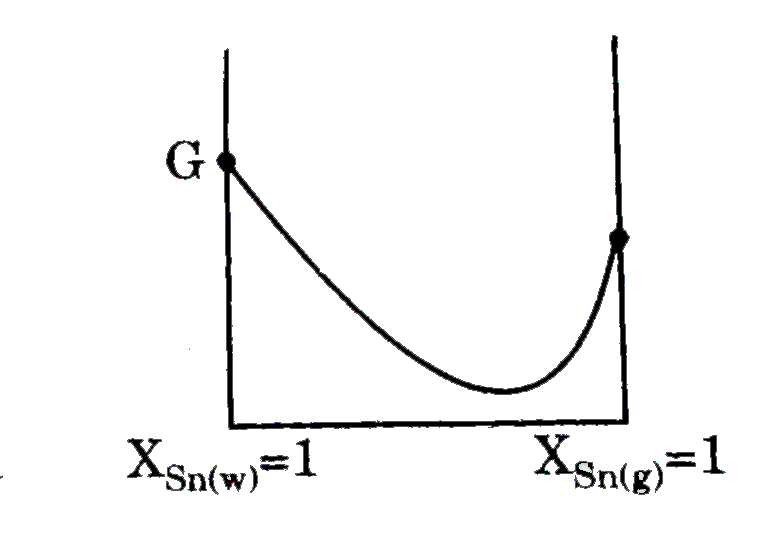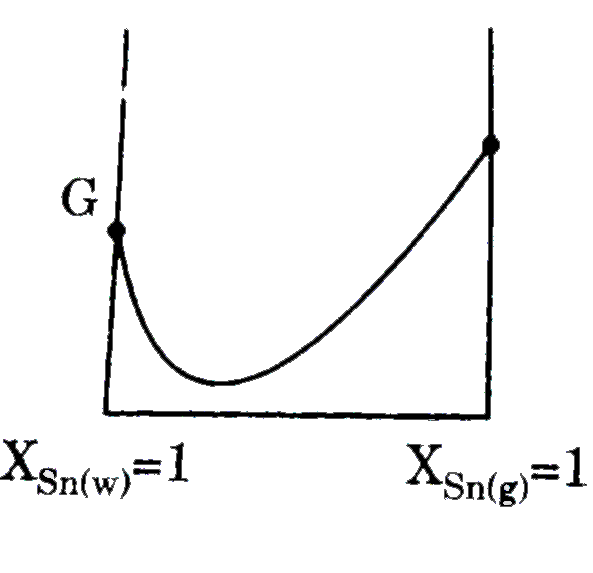(S)-sec Buty1 chloride is subjected to free-radical chlorination followed by fractional distillation to isolate the various isomeric products. How many frecations are isolated?
Four
Five
Six
Three
The correct Answer is:B
In analyzing the sterochemistry of such reactions follow the guidelines:
(1) Unless a bond to an original chiral center is broken, the configuration is retained center and (2) if a new, chiral center is generated, both possible configuration about the new center results.
(S)−CH3CI∣CHCH2CH3CI2−−→hvCICH2∗CHCICH2CH3(A)1,2−Dichlorobutane+CI∣CH3CCH2CH3∣CI(B)2,2−Dichlorobutane+CH3CI∣C∗HCI∣C∗HCH2(C)2,3−Dichlorobutane+CH3CI∣C∗HCH2CH2CI(D)1,3−Dichlo robutan e
Monochlorination of sec-buty1 chloride can occur at any one of four carbons. The staring meterical is the optically active compound (S)-sec buty1 chloride.

CI>C>C>C−H>Hsee-Buty1 chloride
(A) is still chiral but the C−2 configuration is unchanged because no bonds to the chiral carbon (C−2) have beem broken. However because of the change in priorities (CH2CI>CH2CH3), it is R.

CI>C−CI>C−C>H1,2−Dichlorobutane(optically active)
(B) is achiral because during its formation the chiral center (C−2) is destroyed as C−2 with two identical ligands (two CI's) has a plane of symmetry.

Two diastereomers corresponding to (C) are formed. C−2 is steill (S) as none of its bond is broken but C−3 can be R or S as the flat radical has enantiotopic faces. These diastereomers are (2S,3S) which is optically active and meso (2S,3R).

Attack at C−4 does not effect the configuration at C−2 because no bond to the chiral center is broken. (D) is also chiral and (S) because the priority order does not changes (ot is just accidental that −CH2CH2Ci happens to be of the same relative priority as the −CH2CH3).

Note that both (A) and (B) and (D) are formed with retention of configuration but (A) has the opposite sepecification while (D) has the same specification.
Thus a total of five diastereomeric fractions are obtained of which two are optically inactive and three optically active. Monomchlorination of (R)-sec-buty1chloride will yield similar result i.e. five diastereomeric fractions (two inactive and three active). Monochlorination of racemic sec-buty1chloride also gives five diastereomeric fractions but all optically inactive. They will be the same as discussed above except that each chiral structure is now accompanied by an equal amount of its enantiomer.
Topper's Solved these Questions
- STEREOCHEMISTRYBook:R SHARMAChapter:STEREOCHEMISTRYExercise:Level IV
Explore 19 Videos
- STEREOCHEMISTRYBook:R SHARMAChapter:STEREOCHEMISTRYExercise:Archives
Explore 17 Videos
- STEREOCHEMISTRYBook:R SHARMAChapter:STEREOCHEMISTRYExercise:Level II
Explore 25 Videos
- SOLUTIONSBook:R SHARMAChapter:SOLUTIONSExercise:ARCHIVES
Explore 42 Videos
- SURFACE CHEMISTRYBook:R SHARMAChapter:SURFACE CHEMISTRYExercise:Archives
Explore 18 Videos
Similar Questions
How many Monochloro derivatives are possible when 2-methyl butane is subjected to free radical chlorination.(including stereo isomers)
View SolutionExplain the following :
(a) Carbon tetrachloride is used as fire extinguisher.
(b) Use of chloroform as anaesthetic is decreasing.
(C) Chloroform is kept with a little ethyl alcohol in a dark brown coloured bottle.
(d) Iodoform gives precipitate with AgNO3 on heating while chloroform does not.
(E) Alkyl iodides become darken on standing in presence of light.
(f) A small amount of Nal or KI catalyses the hydrolysis of R-CI or the reaction,
R−CI+R'ONa→R−O−R'+NaCI
(g) while preparing alkyl halides from alkanes ,dry gaseous hydrohalgen acids are used instead of their aqueous solutions.
(h) Hydrogen atom of chloroform is definitely acidic in nature.
(i) Vinyl halide is less reactive while allyl halide is more reactive than alkyl halides. or
Vinyl chloride does not gives SN reaction but allyl chloride gives.
(j) Why is free radical halogenation of alkanes is seldom used for laboratory preparation of alkyl halides ? Under what condition good yields of monosubstituted chloride can be obtained ?
(K) What effect should the following resonance of vinyl chloride have on its dipole moment?
H2C−δ+CH−δ−CI⇔H2δ−C−CH=δ+CI
(I) 2-Chloro-3-methylbutane on treatment with alcoholic potash gives2- methylbut-2-ene as the major product.
(m) Compare the rates of (i) SN1and(iii)SN2 reactions of allyl chloride and n-propyl chloride.
(N) When CH3CH=CHCH2CI reacts with alcoholic potassium cyanide, a mixture of isomeric product is obtained.
(O) the formation of the products giving the structures of the intermediates.

(q) Arrange C6H5CH2CH2CI, C6H5CHCICH3 and C6H5CH=CHCI in the order of their decreasing activities with alcoholic silver nitrate.
(r) Arrange CH3CH2Br,C6H5 and C6H5CH2Br in order of their decreasing activities with KCN.
(s) Chlorobenzene is less reactive as compared to ethyl chloride.
View Solution
Knowledge Check
 Cl2−−→hv A mixture of all isomers possible from the mono-chlorination the structures is subjected to fractional distillation, then how many fractions will be obtaine A2B3C4D5
Cl2−−→hv A mixture of all isomers possible from the mono-chlorination the structures is subjected to fractional distillation, then how many fractions will be obtaine A2B3C4D5Isopentane is allowed to undergo free-radical chlorination and the reaction mixture is separated. How many optically active fractions of formula C5H11CI would you expect to collect?
AZeroBTwoCOneDFourThermodynamics stability is often used in chemical reactions to predict extent of reaction or to predict the preferred product in some reaction. Thermodynamically a more stable substance will be the one which has lower Gibb's free energy.In various cases,it might be decided on the basis of enthalpy, however , that may not always be true. The thermodynamic data Therefore can be used for prdicting stability among isotopes and to decide the possible transformation.Based on this information and the data given below, answer the questions that follow.
Date: ΔH∘fofSn(white)=0ΔH∘fofSn(grey)=−2.1kJ/moleS∘ofSn(white)=0S∘ofSn(grey)=44J/K−mole
All above data at 300K.
Density of Sn(w)=7.36g/ml
Density of Sn(g)=5.769gm/ml
One such transformation is 'tin pest' which is an autocatalytic, allotropic transformation of the element tin causing deterioration of tin objects at low temperatures.
Which of the following graph is correct for the allotropic transition Sn(white)→Sn(grey) at 1 bar and 298 K?A B
B C
C D
D
How many monochloro derivatives are possible when 3-methylheptane is subjected to free radical chlorination ?
View SolutionHow many monochloro derivatives are possible when 3-methylheptane is subjected to free radical chlorination ?
View Solution(i) Out of (CH3)3, C-Br and (CH3)3 C-I, which one is more reactive towards SN1 and why?
(ii) Write the product formed when P-nitrochlorobenzene is heated with aqueous NaOH at 443K followed by acidification.
(iii) Why dextro and laevo-rotatory isomers of Butan-2-ol are difficult to separate by fractional distillation?
View SolutionHow many monochloro derivatives are possible when 3-methylheptane is subjected to free radical chlorination ?
View SolutionThermodynamics stability is often used in chemical reactions to predict extent of reaction or to predict the preferred product in some reaction. Thermodynamically a more stable substance will be the one which has lower Gibb's free energy.In various cases,it might be decided on the basis of enthalpy, however , that may not always be true. The thermodynamic data Therefore can be used for prdicting stability among isotopes and to decide the possible transformation.Based on this information and the data given below, answer the questions that follow.
Date: ΔH∘fofSn(white)=0ΔH∘fofSn(grey)=−2.1kJ/moleS∘ofSn(white)=0S∘ofSn(grey)=44J/K−mole
All above data at 300K.
Density of Sn(w)=7.36g/ml
Density of Sn(g)=5.769gm/ml
One such transformation is 'tin pest' which is an autocatalytic, allotropic transformation of the element tin causing deterioration of tin objects at low temperatures.
As temperature is reduced, what can be predicted for objects containing tin ?
View Solution

